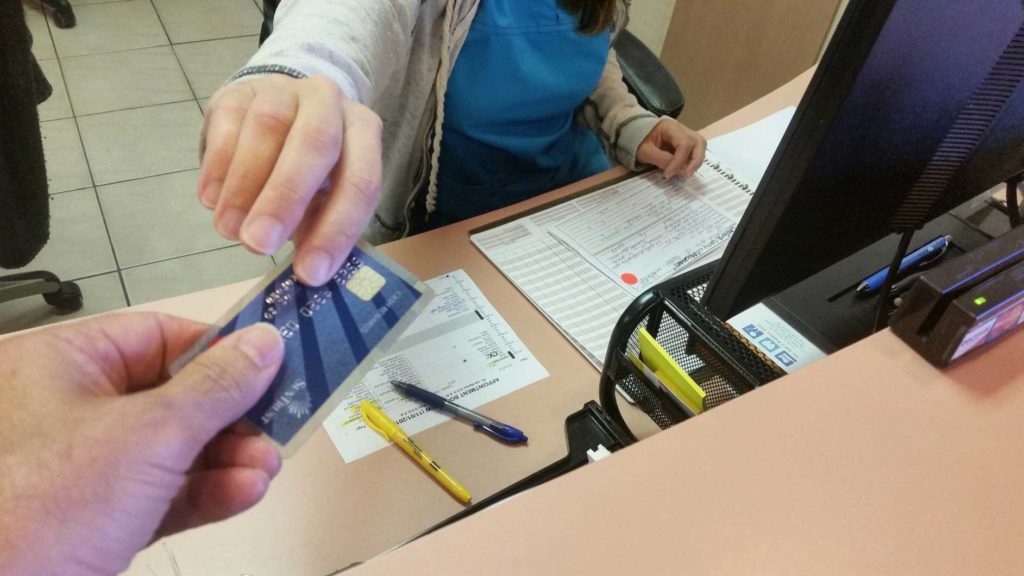In today’s competitive business landscape, understanding and evaluating your company’s performance is more critical than ever. Many businesses turn to Key Performance Indicators (KPIs) to do this effectively. KPIs are measurable values demonstrating how effectively a company achieves its key business objectives. In the realm of customer service, these indicators provide an invaluable tool to gauge the quality of interactions between a company and its customers, and to evaluate the effectiveness of customer-related strategies and processes.
Customer service, often being the frontline of a business, plays a vital role in shaping a company’s public image, and greatly influences customer loyalty and satisfaction. It stands to reason that the KPIs related to customer service are of paramount importance, as they offer actionable insights into the customer experience, service efficiency, and overall performance.
This article will delve into the most important KPIs every business should consider when evaluating their customer service. These metrics will provide a comprehensive picture of your company’s customer service performance, allowing you to pinpoint areas of strength, identify opportunities for improvement, and ultimately enhance your company’s relationship with its customers. Let’s start the journey of understanding and optimizing these crucial performance metrics.
Understanding Customer Service KPIs
Key Performance Indicators (KPIs) are like a company’s vital signs, offering insights into the health and performance of different facets of the business. Customer service KPIs, in particular, provide quantifiable metrics that can gauge the effectiveness of customer service operations and tactics. The goal of these metrics is to keep a pulse on customer satisfaction and to inform strategies that will improve the customer experience.
In a 2025 study by Salesforce, 80% of customers said the experience a company provides is as important as its products or services. This highlights the significance of focusing on customer service, as it directly affects the overall perception of a business and its offerings. However, it’s not enough to just claim to prioritize customer service; companies need to back it up with measurable results.
Customer service KPIs can be categorized under several domains such as:
- Customer Satisfaction: Measures how happy your customers are with your product, service, and overall experience.
- Service Efficiency: Assesses how quickly and effectively your customer service team can resolve customer queries or complaints.
- Quality Assurance: Evaluates the quality of customer interactions and the ability of your team to provide accurate, helpful information.
- Customer Loyalty: Estimates how likely your customers are to remain with your business and recommend your services or products to others.
According to a 2022 report by HubSpot, businesses that prioritize customer service are 60% more profitable compared to companies that don’t. Consequently, businesses should not overlook the power of customer service KPIs.
In the subsequent sections, we’ll delve into specific KPIs, understand why they’re crucial, how they’re calculated, and showcase some real-world examples. By doing so, we’ll explore the impact of these metrics on business growth and how you can leverage them to enhance customer experience, thereby bolstering your bottom line.
Important Customer Service KPIs to Track
A robust customer service strategy goes beyond just responding to customer queries; it encompasses a thorough understanding and tracking of specific KPIs. Here, we’ll explore some of the most critical customer service KPIs to monitor.
- Customer Satisfaction Score (CSAT)
CSAT is a basic yet powerful KPI that gauges customer satisfaction with your business, product, or service. Generally measured on a scale of 1-5, customers are asked to rate their satisfaction with a specific transaction or interaction. The CSAT score is then calculated as the average rating across your customer base.
The significance of CSAT is underscored by a 2022 Microsoft survey revealing that 61% of consumers stopped doing business with a brand due to poor customer service. Keeping track of CSAT scores can help your business identify dissatisfaction trends and take proactive measures to improve.
- Net Promoter Score (NPS)
NPS evaluates customer loyalty by measuring the willingness of customers to recommend your company or services to others. NPS categorizes respondents into Promoters (9-10 score), Passives (7-8 score), and Detractors (0-6 score). The NPS is calculated by subtracting the percentage of Detractors from the percentage of Promoters.
According to a 2025 report by Deloitte, companies with higher NPS tend to grow more than twice as fast as their competitors. Hence, a high NPS is indicative of a strong and loyal customer base, leading to sustainable business growth.
- First Response Time (FRT)
FRT is the average amount of time it takes for your customer service team to respond to a customer query or complaint. In a world where customers expect swift responses, the importance of this metric cannot be overstated.
A Zendesk report from 2025 showed that 89% of customers get frustrated when they have to repeat their issues to multiple representatives. A fast FRT can help alleviate this frustration, leading to improved customer satisfaction and loyalty.
- Average Handle Time (AHT)
AHT measures the average duration taken to resolve a customer issue, including all interactions like calls, emails, and chats. While speed is essential, resolution quality should not be compromised.
According to a 2022 Customer Service Benchmark report, the global AHT was approximately 6 minutes and 50 seconds. Comparing your AHT against such benchmarks helps you assess your team’s efficiency and strategize accordingly.
- Customer Effort Score (CES)
CES measures the ease with which customers can get their issues resolved. Customers typically prefer a solution that requires the least effort on their part. Gartner’s 2025 research noted that 96% of customers with a high-effort service interaction become more disloyal compared to just 9% who have a low-effort experience.
- Customer Churn Rate
This metric shows the percentage of customers who stop doing business with a company over a specific period. High churn rates can be a sign of customer dissatisfaction. A 2022 study by Bain & Company found that a 5% increase in customer retention can increase company profits by 25% to 95%.
- Customer Retention Rate
The flip side of churn rate, the retention rate measures the percentage of customers a company retains over a given period. A high retention rate signifies customer loyalty and satisfaction. It also directly impacts a company’s profitability, considering that acquiring a new customer is five times as expensive as retaining an existing one, according to a 2025 Invesp report.
In the next section, we’ll explore ways to improve these customer service KPIs, ensuring your business continues to grow and your customers remain satisfied and loyal.
How to Improve Your Customer Service KPIs
Improving customer service KPIs is not a one-size-fits-all endeavor. It requires a holistic approach encompassing a customer-centric mindset, efficient use of technology, regular staff training, and constant analysis and evaluation. Below are some strategies that can help bolster your customer service KPIs.
- Adopting a Customer-Centric Mindset
A customer-centric mindset puts customers at the heart of every decision and action in your business. A 2022 study by Walker Information revealed that businesses that adopt customer-centric strategies are 60% more profitable compared to those that are not focused on the customer.
This approach involves understanding your customers’ needs, desires, and values, and aligning them with your products, services, and customer service strategies. It can result in improved CSAT and NPS scores, leading to more satisfied, loyal customers.
- Implementing Efficient Technologies
Efficient technology plays a significant role in improving customer service. Automated customer service tools, like chatbots and AI assistants, can help reduce FRT and AHT, improving service efficiency.
According to a 2025 report by Gartner, companies that implemented AI in their customer service saw a 10% increase in CSAT scores and a 25% reduction in customer service costs. Technologies like Customer Relationship Management (CRM) systems can provide valuable data about customer behavior and preferences, enabling personalized service and potentially boosting CES.
- Continual Staff Training
Regular staff training ensures that your team is up-to-date with product knowledge, customer handling skills, and the latest customer service technologies. According to a 2022 LinkedIn report, companies that invested in employee training saw a 24% increase in profits.
Training programs should also emphasize empathy, active listening, and problem-solving skills to improve the quality of customer interactions, ultimately leading to higher CSAT and NPS scores and lower churn rates.
- Regular Analysis and Evaluation
Constantly monitoring and analyzing your KPIs helps identify trends, strengths, and areas for improvement. This ongoing evaluation enables you to proactively address issues and continually enhance your customer service.
A 2025 Forrester study found that businesses that use advanced analytics to drive customer service improvements saw a 15% increase in customer retention rates. This underscores the value of using analytics for data-driven decision-making in customer service.
The next and final section will wrap up our discussion on customer service KPIs, emphasizing the importance of continually monitoring and improving these metrics for sustained business success.
Conclusion
In the ever-evolving business landscape, customer service has emerged as a key differentiator for companies across industries. As we’ve explored throughout this article, keeping a keen eye on key customer service KPIs such as CSAT, NPS, FRT, AHT, CES, customer churn rate, and customer retention rate is vital in gauging the pulse of customer sentiment and the efficiency of your service operations.
Remember, adopting a customer-centric approach is at the heart of all successful customer service strategies. According to a 2025 PWC study, 73% of customers pointed to customer experience as an essential factor in their purchasing decisions, emphasizing the crucial role of customer service in business success.
The use of efficient technologies is no longer a choice but a necessity. A 2022 Gartner report revealed that companies that utilized AI in their customer service operations were able to reduce customer service costs by up to 30% and increase CSAT scores by 10%.
Moreover, investment in continual staff training is crucial. The LinkedIn 2022 Workforce Learning Report showed that companies that spend significantly on employee learning and development were 58% more likely to have high employee engagement, which directly translates into improved customer service.
Finally, regular analysis and evaluation of your customer service KPIs allow you to identify trends, understand your performance, and make data-driven decisions. A 2025 report by McKinsey revealed that companies utilizing advanced analytics for decision-making had a 33% higher profit margin than their competitors.
As we wrap up, it’s important to remember that monitoring these KPIs isn’t a one-and-done process. It requires constant attention and adjustment to ensure a smooth and satisfying customer experience. These metrics provide valuable insights that can help shape strategies, implement improvements, and ultimately, foster stronger customer relationships. In an era where the customer is king, these KPIs can be your royal road to achieving superior customer service and driving business success.




